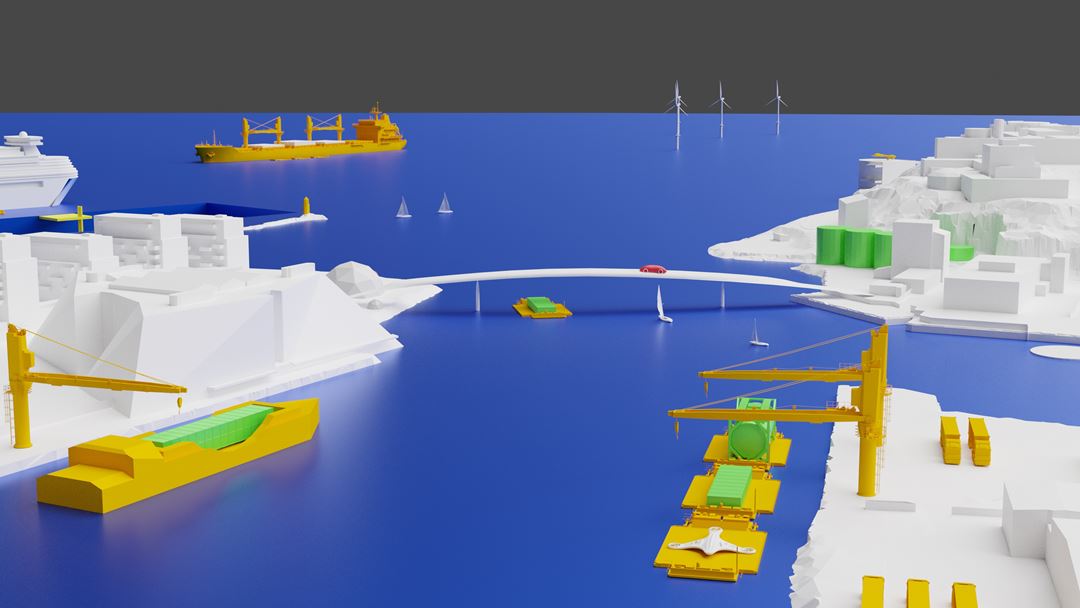
INTERPORT – Integrated energy systems in ports
About INTERPORT
Background
Shipping is considered to be one of the most environmentally efficient ways to transport large volumes of goods and passengers. However, domestic shipping was estimated to produce 4.3 million tonnes of CO2 in 2018, accounting for around 10% of Norway’s total greenhouse gas (GHG) emissions for the year. Of this, ports were responsible for approximately 1.2 million tonnes. If Norway is to meet its goal of halving its total GHG emissions by 2030 compared to 2005, the maritime transport sector must contribute.
In order to facilitate the maritime sector’s transition to low-emission and zero-emission fuels, several areas require research, development and innovation. In particular, ports are crucial to the success of decarbonising this area.
Norway’s National Transport Plan (NTP) for 2018-2029 sees a future role for ports as zero-emission energy hubs. However, this transformation is no small task; each port has its own unique conditions, including vessel types, existing infrastructure and institutional relations. This is the challenge that INTERPORT will address.

Aims and objectives
INTERPORT’s main objective is to develop and spread knowledge regarding the design of integrated, decarbonised and cost-efficient energy systems in ports. The aim is to reduce the carbon footprint in port areas by at least 50% in 2030 and 100% in 2050, including ship fuelling and charging.
This will be achieved by:
- Using a combination of techno-economic and socio-technical approaches to develop future demand scenarios for different energy carriers in three port types that are representative of Norwegian ports,
- Identifying key opportunities for technological integrations in future, low and zero-emission port energy systems that will reduce energy losses by 20%, lower peak power demands by 30%, and ensure a high level of flexibility and a reliable supply,
- Exploring new business models for the proposed integrated energy system concepts that will create value for ports and energy providers without increasing the cost for energy end users,
- Providing specific, strategic recommendations for the staged, cost-efficient development of integrated energy systems in three Norwegian ports,
- Promoting the uptake and further development of results through spin-off projects and Enova applications, and
- Educating future experts in the form of one Postdoc researcher and a minimum of three MSc candidates.